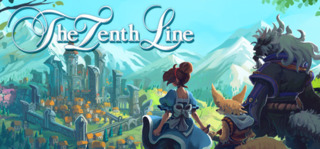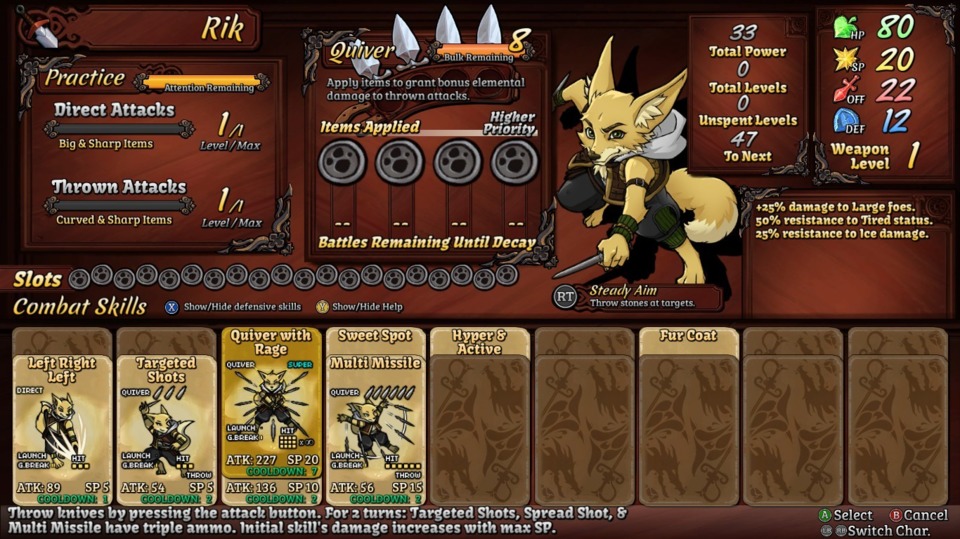Indie Game of the Week 188: The Tenth Line
By Mento 3 Comments

The Tenth Line is, I suspect, what happens when board game nerds are given the reins of a JRPG. If you haven't been playing board games for a while, or perhaps only the occasional Monopoly or Scrabble when family is over, they've embraced their largely grown-up proponents and have become vastly more complex and feature-rich over the years, demanding ever more mastery over Byzantine rulesets and dozens of figurines, dice, cards, board pieces, and other paraphernalia. "Advanced" board gaming has ceased to be the domain of a few weird grognards hanging around Games Workshop looking to bolster their Eldar factions, and have paradoxically become more accessible to a wider audience of discerning teens and adults despite their increased level of intricacy. The Tenth Line has, deep down, a framework familiar to anyone acquainted with RPGs, but one with obtuse systems layered over obtuse systems that I'm sure I'll still be trying to make heads or tails of as I draw closer to its conclusion.
The Tenth Line features three primary characters: an unnamed human princess on the run from cultists, and a pair of beastmen brothers (adoptive) who decide to help her get back home for the royal reward waiting for them. Surrounding this are a series of prophecies - which also happen to be the dogma of this world - that recently seem to be coming true one after the other, the last (the titular Tenth Line) being a vaguely apocalyptic premonition. This party of three seems fairly set in stone from the outset: each character has dedicated pages for their stat growth and their skill management, and occupies a specific role in combat that complements the other two. Guest characters meanwhile can be assigned to provide the occasional bonus attack from the wings. The game balances the majority of its runtime between its combats, which use a sort of Valkyrie Profile (or Indivisible, as a more recent example) system where the three characters can attack in any order within a certain active time window, the idea being to use their attacks in the combinations that make the most sense for maximum damage output. These combat sessions divide the screen into three horizontal "lanes": enemies pour across each three until they occupy the front column of their side of the screen, and player attacks can affect one line, one column, or one enemy (usually for concentrated damage, best suited for tougher foes). The other half of the game involves 2D platforming, where the player ascends or descends floors to initiate encounters with visible enemies (which can be ambushed, but can ambush you in turn) and collect treasures. The platforming also has some mild puzzle elements, with each character providing a different active skill: the Princess pushes blocks, the kobold Rik can toss stones to knock items out of high places, and the dragon Tox can remove obstacles with his elemental breath.

However, in terms of where the player's time is going, a sizeable chunk of it will be spent in the various character progression menus. There are so many systems in play here, from the License Grid-style stat-boosting table, to the individual weapon upgrading systems, to equipping your characters with consumables to use in a pinch when fighting: each of these systems are powered by items the player finds while playing, and each item has a mixture of properties that makes them better suited for certain roles. For instance, a heavy object (like a rock) is good for increasing Tox's breath damage while a sharpened one (like a tooth) is better for Rik or the Princess, since they both used edged weapons. Each item also has an elemental type and a certain "path" shape: the "License Grid" works a bit like Pipe Dream, so items might be L-shapes or T-shapes or I-shapes and it's up to the player to use the correct ones to navigate a path through each character's grid. Any new item, no matter how unimpressive it sounds, could have a valuable purpose hidden somewhere deep in the morass of menus and systems that comprise the game's progression systems. It's almost intimidating the way it's all presented to you early on, though thankfully with only three characters to ever worry about it's never overwhelming nor is it really possible to gimp a character or waste a valuable item.
I appreciate the game's convoluted moxie more than I perhaps enjoy playing it, though it's a close-run contest. The platforming is easily the game's worst aspect, as the jumps are swimmy, it's easy to get trapped by an enemy who suddenly darts towards you without warning (leading to an enemy ambush), and you have to drag all three characters with you through each of these platforming sections by alternating between them - leaving someone too far behind means it takes a combat turn for them to catch up to you after triggering an encounter. That said, it is a game that is rewarding for completionists, as you get tremendous rewards for collecting every item and opening every chest in the environment, often a vitally important new upgrade to your weapon classes. Combat can be a slog at times - you might fight anywhere between four and forty enemies, though the many AoE attacks at your disposal blasts through hordes quickly enough (it's a little like the older Might and Magic games in that regard) - but the balance of real-time combo juggling and the strategic choices for each character's attack that turn and how they might synergize keeps the fighting engaging enough. There's also a card game, Quad Pro Quo, which works much like Final Fantasy VIII's Triple Triad, complete with high-value cards bearing the faces of playable characters and major NPCs: there's no risk of losing cards, only your meager buy-in, and each opponent in the game has just the one item to win (often a new card) before you're good to move on. It's not an incredibly elaborate card game, but as an optional value-add it's a welcome break from the core gameplay.
It's the nature of complex games to grow on you over time, as your initial confusion and intimidation makes way for a deeper admiration for the level of nuance and the amount of plate-spinning in play, and I'm just about there with The Tenth Line as I enter its third chapter. It's written well enough - one neat narrative-based quirk is that every NPC conversation is different depending on your currently active character, as are each of the trio's responses when checking enemies and their stats - and a clean visual style that balances pixellated sprites with more detailed portraits. The menus and UI is replete with little details everywhere you look, almost all of which have some bearing on the game and your characters' respective combat-readiness, so I've been trying to take as much of it in as possible so I don't miss any avenues of improving my characters further. The game's difficulty slider is an odd thing: it doesn't so much make the combat easier than mitigates the game's complexity, removing certain features from the game to simplify matters (the easiest setting, which is functionally the "story-only mode," eliminates the combat altogether). A chief purpose of a difficulty slider is to make a game more accessible, of course, but I'm not yet sold on the idea that cutting out huge swathes of the experience of playing it is the most conducive path. I suppose I am coming at this from the perspective of a turn-based JRPG nerd though, so I'll acquiesce on this.
The Tenth Line is proving to be a game that is richly rewarding in how gradually you come to understand it, even if it falters with some of its core gameplay aspects - neither the platforming or the RPG combat are wholly excellent on their own, though having a mixture of both means that neither have to wear out their welcome. Like many of the great JRPGs that have influenced it, The Tenth Line is something you're expected to sink your teeth into as you spend upwards of 20 to 30 hours tinkering around with its features, while enjoying a story that includes serious themes like xenophobia and faith without ever becoming too heavy or joyless. Its absurdly deep inclinations certainly won't be for everyone, but I've decided to stick it out for now.
Rating: 4 out of 5.
| < Back to 187: Timespinner | The First 100 | > Forward to 189: Four Sided Fantasy |
